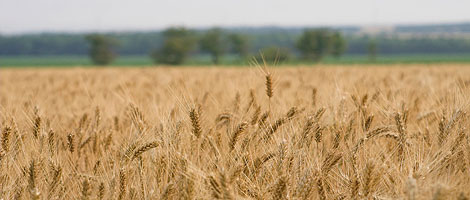If the Ukraine war drags on into May, how quickly will grain prices retreat to something like normal?
To answer that question–and similar queries for fertilizer, for chip production, and other sectors–pay attention to the lags: how much time it will take to recover from current shortfalls and to introduce new production.How the lags play out in individual sectors will be a key determinant for what stocks rise and fall–and when.
Let me use wheat as an example.
Right now the problem sending wheat prices to record levels–with the pass on effects of higher prices for bread, and pasta, and anything made with grain–is that traders can’t get the stock piles from last year’s harvest now in storage in Ukraine and Russia to market. There’s a lack of “willing” transport and huge uncertainties about how any trader that actually arranged a deal might pay for it–or get paid. (What’s a ruble worth today? How about next week?)
But this problem is just the beginning of the lag problem.
The winter wheat crop in Europe planted last fall will be ready for harvest in the summer. How much of that will actually be harvested? In a war zone? By farmers who have joined the Ukrainian army? Using what for fuel? The uncertainty of answers to those questions–as well as the likelihood that the answers will troublingly negative that has helped drive wheat futures–that is wheat contracted for future delivery–to astronomical heights.
And then how about the spring plantings for wheat and corn and barley? How many farmers will be able to plant or willing to plant? How much diesel fuel will be available for tractors? What is the likely availability of fertilizer for that new crop?
Even if the war were to end tomorrow and somehow peace were to descend on the Ukraine, infrastructure has been destroyed, raw materials like fertilizer are in short (and very expensive supply), farming families have been displaced, and farmers have been killed.
There will be an extreme and unpredictable lag between any signed agreement to end this conflict (assuming that there is one, of course) and a return to “normal” market supply.
Lags aren’t limited to food crops either.
One of the most series is now hitting the chip industry. Neon, a crucial gas used in the mixture of gases that are use in the lasers used to etch circuits unto chips, is in short supply because, I’m guessing this will come as a surprise to you and it certainly did to me, 50% of the world neon is produced in Ukraine. (For krypton, another critical chip-making gas, Ukraine supplies about 40% global supply. The price of krypton had climbed to $8.66 a liter at the end of January from $1.73-$2.59 in 2021.) Building new capacity to produce these gases takes time–especially because the supply has to reach 99.9% purity and be “certified,” a process that can take as long as six months.
I expect that problem–and other lags–to show up loudly in earnings calls for the first and second quarters of 2022 (at the least). The comments will be depressingly similar: “We expect that supply chain problems will reduce production/sales/earnings for the next one or two quarters and perhaps all of 2022.”
Think that will be music to investors’ ears?


